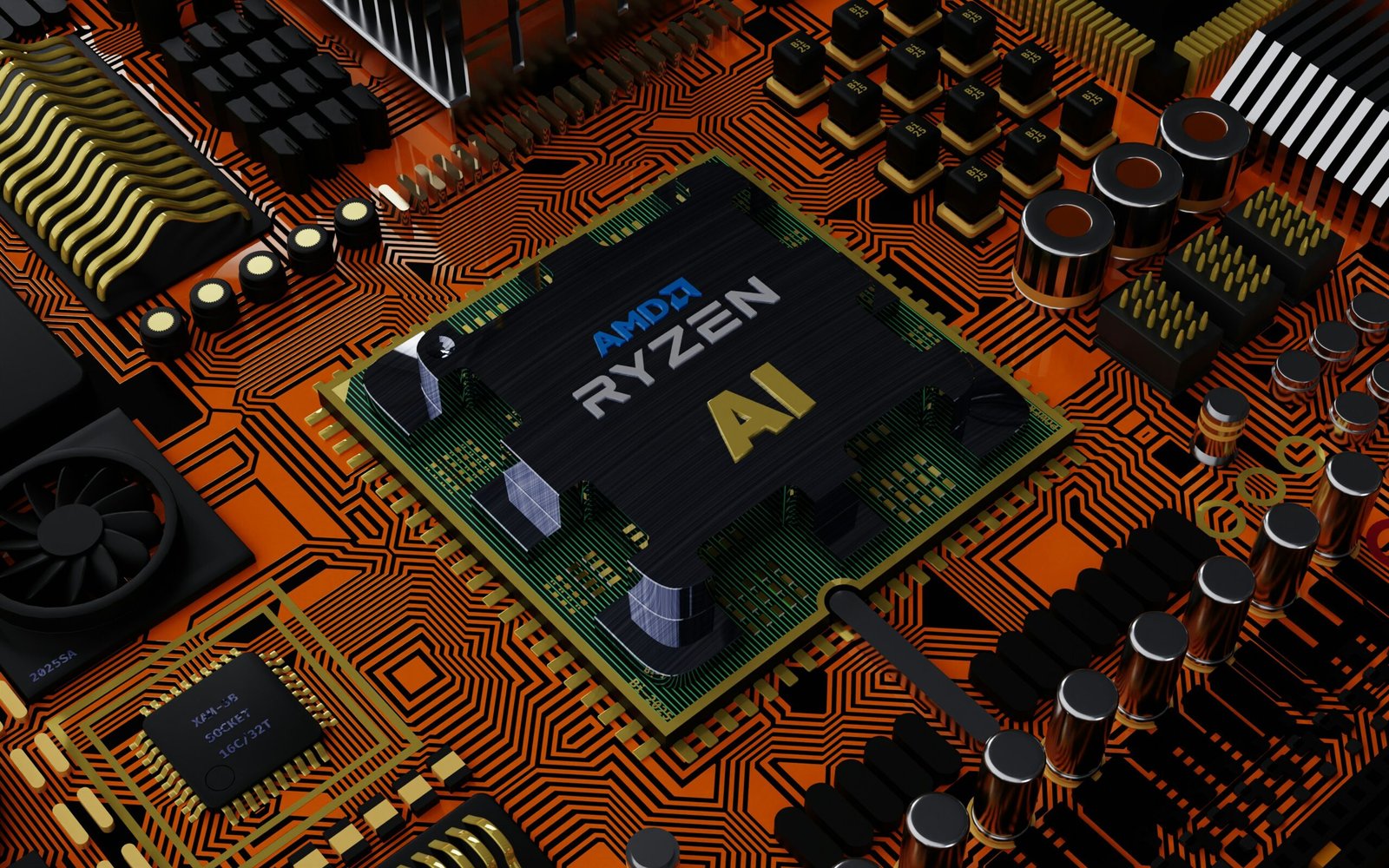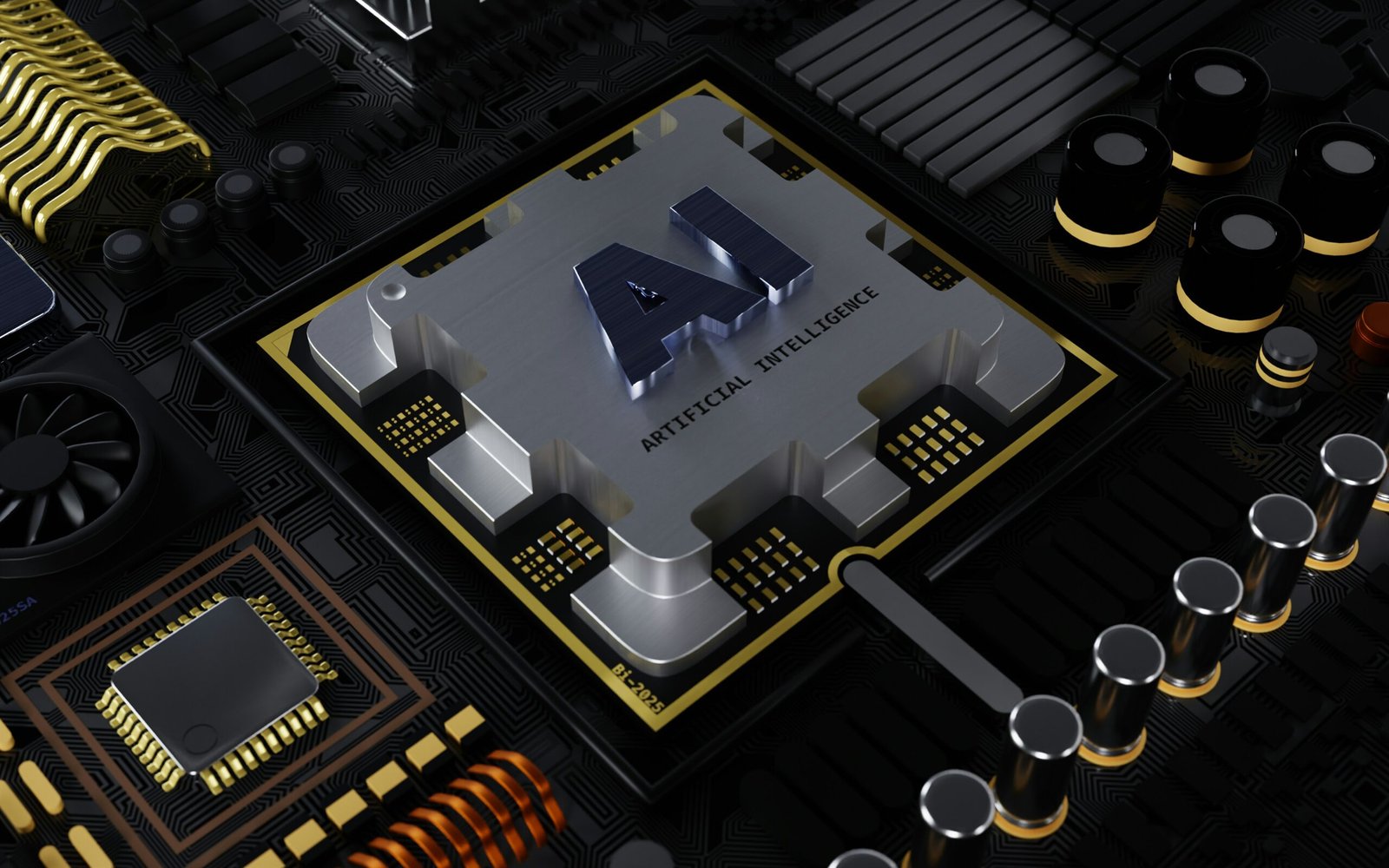
Introduction to 5G Technology
The advent of 5G technology has marked a significant leap in the realm of telecommunications, ushering in an era characterized by unprecedented speeds, lowered latency, and enhanced connectivity. Compared to its predecessors, 4G and 3G, 5G offers a quantum improvement in data transfer speeds, capable of reaching up to 10 gigabits per second. Such capability epitomizes the promise of near-instantaneous communication, fundamentally transforming user experiences across various sectors.
A notable aspect of 5G is its reduced latency, which ensures minimal delay in data transfer. This is particularly advantageous in applications requiring real-time interaction, such as remote surgery in the healthcare sector. With 5G-enabled telemedicine, healthcare providers can perform intricate procedures and consultations seamlessly, effectively bridging the gap created by geographical constraints. Additionally, the improved connectivity provided by 5G paves the way for expanded use of IoT devices in health monitoring, facilitating better patient care through continuous, real-time data exchange.
In the automotive industry, 5G technology fosters the development of autonomous vehicles, enhancing vehicle-to-vehicle (V2V) and vehicle-to-infrastructure (V2I) communication. These advancements contribute significantly to road safety and traffic management, as vehicles can exchange information swiftly and accurately, reducing the likelihood of accidents and easing congestion. Moreover, 5G’s high bandwidth capabilities support advanced driver-assistance systems (ADAS), further fostering safer and more efficient driving experiences.
Smart cities have also reaped substantial benefits from 5G technology, leveraging enhanced connectivity to create more responsive and efficient urban environments. Through the deployment of 5G-enhanced sensors and IoT devices, cities can optimize traffic control, energy management, and public safety systems, leading to smarter resource utilization and improved quality of life for residents. The integration of 5G within everyday infrastructure exemplifies its pivotal role in shaping future urban landscapes.
Limitations of 5G
The advent of 5G technology brings with it numerous promises of ultra-fast internet speeds, low latency, and hyper-connectivity. However, it’s important to recognize the current limitations and challenges that accompany this fifth-generation technology. One of the foremost issues is the high cost of infrastructure. Deploying 5G requires significant investment in new hardware, including the installation of numerous small cell sites and upgrading existing network infrastructure. This financial burden often limits the extent and speed of 5G deployment, especially in regions where economic resources are already constrained.
Energy consumption is another crucial concern. The equipment necessary for maintaining 5G networks requires substantial power, leading to questions about sustainability and environmental impact. The increased energy demands can potentially strain existing electrical grids, especially during peak usage times, and contribute to a larger carbon footprint. This raises the unavoidable question of balancing rapid technological advancement with environmental responsibility.
Coverage disparity remains a significant hurdle. The propagation characteristics of high-frequency bands used in 5G mean that signal strength diminishes rapidly over distance and is easily obstructed by buildings and other physical barriers. Consequently, rural areas struggle to benefit from 5G because of the less dense population that does not justify the high infrastructure costs. Urban centers, conversely, are prioritized, creating a digital divide that exacerbates inequality in access to next-generation connectivity.
Beyond logistical and economic concerns, there are potential health risks and public apprehensions related to 5G technology. While scientific consensus does not conclusively link 5G to adverse health effects, widespread anxiety persists around prolonged exposure to electromagnetic fields (EMF). These perceptions can hinder public acceptance and stall network expansion due to resistance from communities wary of new cellular technologies.
Technological hurdles also exist. Unlocking the full capabilities of 5G, such as latency reductions and higher data throughput, demands overcoming complex engineering challenges. Advanced algorithms, robust cybersecurity measures, and seamless integration with existing networks are vital areas of ongoing research. Achieving the end-to-end low latency that 5G aspires to deliver remains a considerable technological endeavor.
While 5G represents a monumental leap in mobile communications, navigating these limitations and challenges is essential for the technology to reach its transformative potential. As the industry moves toward the next-generation 6G, these issues will need to be addressed comprehensively to ensure widespread, equitable, and sustainable deployment.
The Promise of 6G
As we stand on the precipice of another significant leap in wireless technology, the anticipation surrounding 6G technology is palpable. While 5G has already started reshaping the landscape with its enhanced speed and reduced latency, 6G promises to be an even more transformative force. Expected to emerge around 2030, 6G will not merely be an incremental upgrade but a monumental advancement in connectivity and capabilities.
Central to the appeal of 6G is its unprecedented speed; projections suggest that it could be up to 100 times faster than 5G. This increase in speed will open new avenues for data-intensive applications, allowing for ultra-high-definition content to be streamed instantly and facilitating the seamless integration of virtual and augmented reality into everyday experiences. Additionally, the latency in 6G networks is expected to be significantly lower than in 5G, approaching near-zero levels. This ultra-low latency will be crucial in applications requiring real-time responsiveness, such as autonomous driving and remote surgeries.
Beyond speed and latency, 6G aims to boost reliability and coverage. Innovative technologies, such as advanced beamforming and the use of higher-frequency bands, will ensure robust and consistent connections, even in densely populated urban areas. This enhanced reliability holds promise not only for individual users but also for critical infrastructure and industries that depend on constant and stable connectivity.
A distinctive feature of 6G networks will be the seamless integration of artificial intelligence (AI) and machine learning (ML). These technologies will enable networks to self-optimize, anticipate user needs, and allocate resources more efficiently. AI and ML will underpin the development of intelligent edge computing capabilities, reducing the burden on central data centers and enabling faster data processing closer to the source.
In summary, the promise of 6G is an interconnected world with lightning-fast speeds, minimal latency, and unparalleled reliability. Through the integration of AI and ML, 6G will spearhead a new era of smart, adaptive, and resilient networks, heralding a future where hyper-connectivity is the norm rather than the exception.
Key Innovations and Technologies Driving 6G
The advent of 6G technology promises to revolutionize wireless communication by introducing a host of cutting-edge innovations and technologies. One of the cornerstone technologies expected to drive 6G is the use of terahertz (THz) frequency bands. These frequency bands, ranging from 0.1 to 10 THz, offer much higher data rates and bandwidths compared to current 5G networks, enabling the transmission of massive amounts of data with minimal latency. This is particularly significant for applications requiring ultra-high-speed data transfer, such as immersive AR/VR experiences and real-time holography.
Additionally, advanced antenna technologies, such as massive MIMO (Multiple Input Multiple Output) and intelligent reflecting surfaces (IRS), are set to play a crucial role in 6G networks. Massive MIMO involves the use of a large number of antennas at both the transmitter and receiver to improve spectral efficiency and network capacity. On the other hand, IRS can dynamically control the propagation environment by reflecting and refracting signals in favorable directions, thereby enhancing signal coverage and reducing energy consumption.
Quantum communication represents another revolutionary technology poised to influence 6G development. By leveraging the principles of quantum mechanics, quantum communication offers unparalleled security through quantum key distribution (QKD), which can prevent eavesdropping and ensure secure transmission of sensitive data. This level of security is essential as the number of connected devices continues to grow exponentially, amplifying the risks of cyber threats.
Furthermore, artificial intelligence (AI) and machine learning (ML) algorithms are expected to be deeply integrated into 6G networks. These algorithms can optimize network performance in real-time by predicting traffic patterns, managing resources efficiently, and adapting to varying network conditions. The symbiosis of AI and 6G technology is likely to usher in a new era of smart networks capable of self-healing and self-optimizing, reducing human intervention and operational costs.
Overall, the combination of terahertz frequency bands, advanced antenna technologies, quantum communication, and AI-driven optimization is set to transform the landscape of wireless communication with 6G, paving the way for faster, more secure, and efficient data transmission.
Potential Applications of 6G
The advent of 6G technology heralds a transformative era for various industries, ushering in unprecedented advancements in connectivity and capability. One of the primary potential applications of 6G is in augmented reality (AR) and virtual reality (VR). With 6G’s ability to deliver ultra-low latency and enhanced bandwidth, AR and VR experiences will become more immersive and interactive. Industries such as gaming, education, and real estate could benefit tremendously from these advancements, providing users with near-instantaneous feedback and realistic simulations.
Telemedicine stands to gain significantly from 6G technology as well. The enhanced connectivity and data transmission speeds will facilitate real-time, high-definition video consultations between patients and healthcare providers, regardless of geographical location. This could lead to more accurate remote diagnoses and the ability to perform complex medical procedures with robot-assisted surgery, thereby democratizing high-quality healthcare services.
In the realm of autonomous vehicles, 6G will be a critical enabler. The ultra-reliable low-latency communications inherent in 6G will allow autonomous vehicles to communicate with each other and with smart infrastructure in real time. This interconnectedness will lead to safer, more efficient transportation systems, reducing the likelihood of accidents and optimizing traffic flow. Additionally, with 6G, the data generated by vehicles can be leveraged instantly to make adaptive, intelligent transportation decisions.
Industrial automation is poised for a revolution with the introduction of 6G. The enhanced capabilities of 6G networks will enable seamless machine-to-machine communication, facilitating more efficient, autonomous operations within factories. This can lead to improved productivity, reduced downtime, and smarter supply chain management. Machines will be able to operate with higher precision, with real-time data analytics driving better decision-making processes.
Lastly, the Internet of Everything (IoE) will achieve a new dimension with 6G. Connecting an unprecedented number of devices, from household appliances to complex industrial machinery, 6G will enable these entities to communicate and cooperate in real time. The result will be more coherent and intelligent ecosystems, where the synergy between interconnected devices leads to improved efficiencies and new user experiences, by leveraging big data and artificial intelligence.
Challenges in Developing 6G Networks
As the vision of 6G networks begins to take shape, a multitude of challenges emerge that require comprehensive solutions. Among the foremost are technical challenges that pose significant hurdles. The leap from 5G to 6G is expected to involve unprecedented data speeds, lower latency, and the ability to support vast amounts of devices per square kilometer. Achieving these technical feats will demand advancements in multiple areas such as new modulation schemes, innovative antenna designs, and advanced signal processing techniques.
Regulatory and spectrum allocation issues represent another critical challenge in 6G development. The radio frequency spectrum is highly congested, and finding suitable bands for 6G will necessitate international cooperation and coordination. Existing regulations may need revision to accommodate the higher frequency bands that 6G is likely to operate within, possibly extending into the terahertz range. This could require establishing new global standards to ensure uniformity across different regions.
Security concerns are also paramount, as the hyper-connected nature of 6G will heighten the potential for cyber threats. Ensuring robust security measures to protect user data and maintain network integrity will be crucial. This involves developing highly secure communication protocols and advanced encryption technologies to safeguard against sophisticated cyber-attacks.
Another layer of complexity is introduced by the need for global standards. Uniform standards are essential for the interoperability of 6G devices and services across different countries and manufacturers. Achieving consensus on these standards will require collaborative efforts among international bodies, governments, and industry stakeholders, which historically, can be a time-consuming process.
Financial and logistical challenges also loom large. Building the infrastructure necessary for 6G networks involves substantial investment in new hardware, software, and deployment strategies. The associated costs may be prohibitive for some regions, potentially widening the global digital divide. The logistical complexities of constructing and maintaining dense network architectures, particularly in urban areas, further exacerbate the challenge.
Addressing these multifaceted challenges is crucial for the successful realization of 6G networks, which promise to revolutionize connectivity and transform how we interact with the digital world.
Global Efforts and Collaborations
As the world increasingly anticipates the dawn of 6G technology, a multitude of global efforts and collaborations are in motion to set the stage for its development and standardization. Governments, private enterprises, and international organizations are mobilizing resources and expertise to pave the way for this technological leap. Key players in this collaborative endeavor include technologically advanced nations such as the United States, China, South Korea, Japan, and the European Union, each conducting pivotal research and policy planning to bolster their respective positions in the 6G landscape.
In the realm of academia, numerous research initiatives are underway globally, often in partnership with private industry leaders. For instance, the University of Oulu in Finland hosts the flagship 6G Flagship Program, working closely with global tech giants like Nokia, Ericsson, and Huawei to pioneer innovative 6G solutions. Similarly, in the United States, the Federal Communications Commission (FCC) has initiated spectrum allocation discussions and research funding to ensure the country’s readiness for 6G development.
International collaboration also plays a significant role, with organizations such as the International Telecommunication Union (ITU) orchestrating efforts to draft the standards and guidelines for 6G. The European Union’s Horizon 2020 program exemplifies this collaborative spirit, financing various projects that bring together researchers, developers, and policy makers from multiple countries to explore and innovate in the telecommunications field.
Moreover, industry-driven alliances such as the 6G Innovation Centre (6GIC) in the UK bring together a wide array of stakeholders from various sectors. These collaborations aim not only to develop the technical groundwork for 6G but also to address the socioeconomic implications of this burgeoning technology. Collectively, these global efforts and collaborations underline the international enthusiasm and coordinated strategy essential for realizing the vision of hyper-connected 6G networks.
Future Outlook and Conclusion
The advent of 6G technology promises to revolutionize the landscape of hyper-connected devices, building upon the transformative impact of 5G. As we stand at the precipice of this next technological leap, it is imperative to reflect on the myriad advancements we can anticipate. Enhanced speed, seamless connectivity, and unprecedented data throughput are just a few of the revolutionary changes 6G aims to deliver. Alongside these technical enhancements, 6G will introduce more sophisticated AI integration, enabling smarter and more autonomous devices.
The potential societal impact of 6G extends beyond mere technological improvement. With its advanced capabilities, 6G could usher in groundbreaking applications in various sectors, such as healthcare, transportation, education, and entertainment. For instance, in healthcare, the ultra-reliable and low-latency communication could facilitate remote surgeries and real-time patient monitoring with extraordinary precision. Similarly, in the realm of transportation, 6G will support the expansion of autonomous vehicles by providing more robust and resilient connectivity. Furthermore, the educational sector could benefit from ultra-high-resolution virtual and augmented reality experiences, creating immersive learning environments.
While the vision for 6G is promising, realizing this next wave of hyper-connected devices requires meticulous planning and substantial investment. The timeline for 6G deployment is an ongoing subject of discussion among policymakers, researchers, and technology developers. Initial trials and basic implementations are expected to begin in the early 2030s, with widespread adoption likely occurring towards the mid-2030s. To achieve this, global cooperation in setting standards, robust infrastructure development, and innovation in hardware and software will be essential. Additionally, addressing cybersecurity concerns and ensuring equitable access to this transformative technology must remain a priority.
As we look to the future, the anticipated benefits of 6G affirm the need to drive innovation and collaboration. The journey from 5G to 6G symbolizes more than a technological transition; it represents our collective quest toward a more connected and intelligent world, where technological advancements serve to enhance human capabilities and enrich societal progress.




